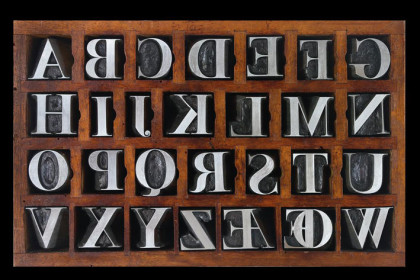
In 1813 died in Parma Giambattista Bodoni, and the city where he lived and where he could become “prince of printers” dedicates an exhibition set up in several locations within Pilotta complex: the journey begins on the Palatina Library, in the Petitot Gallery, continuing then in the under-terraces of Teatro Farnese and ending in the Napoleonic wing of the National Gallery.
The exhibition reconstructs accurately, starting with a short but valuable overview of the history of printing, the entire process of making and marketing of volumes published by Bodoni’s press and the cultural, economic and institutional contest – that of Italian courts and European interlocutors to which he was tied – that found in the printer an excellent artist able to give form to books that were and still are objects of design, admired and desired by nobility who used them as a status symbol to show off as much as true works of art.
Bodoni came to Parma from Saluzzo in 1768 and, through foresighting characters such as Guillaume Du Tillot, Minister of the duke Don Filippo of Borbone, and the librarian Paolo Maria Paciaudi, was given the task of founding a Royal Printing House from which emerged, along with the early works, the refined “party book” for the marriage of Ferdinando of Borbone and Maria Amalia. From that point Bodoni became a real celebrity: required by the Papacy and the major royal houses, he was even dedicated an Apotheosis showing him crowned and surrounded, under the aegis of Minerva, by all the authors he published.
The editions Bodoni (in total about 1500) are characterized by an obsessive attention to every phase of the work, from the production of the punches specially designed by Bodoni to the composition of the page with the old movable type, until the completion of printing techniques on highly selected papers or on special media such as silk and parchment, and finally attention to books illustrations and bindings. Everything always with high objectives of quality and elegance and without forgetting what we now define marketing of precious editions. Excellent examples are the Typography Manual, published posthumously by his widow in 1818, a series of character tables – still the basis of modern font “Bodoni” and the entire graphic communications who wants to express “Italianness”, just think of the fascist period or the use by designers such as Giorgio Armani and Ferrè which exploit the aura of “luxury” of the character – or even the huge work Oratio Dominica (Our Father), published in 155 languages, with the use of 215 different characters.
On the death of Bodoni the whole complex of tools, books and personal papers was still intact; thanks to the library director, Angelo Pezzana, it was purchased with the support of Maria Luigia of Austria for a mere 50,000 lire and now forms the core of Bodoni Museum, a rare example of a comprehensive public and coherent collection of ancient typographical material.
Bodoni (1740-1813). Prince of printers in the Europe of the Enlightenment and Napoleon
Edited by Andrea de Pasquale
Biblioteca Palatina, Farnese Theatre, National Gallery
Parma, Palazzo della Pilotta, Strada della Pilotta, 3
until January 12th, 2014
Tel +39 0521220449
 English
English  Italiano
Italiano 



